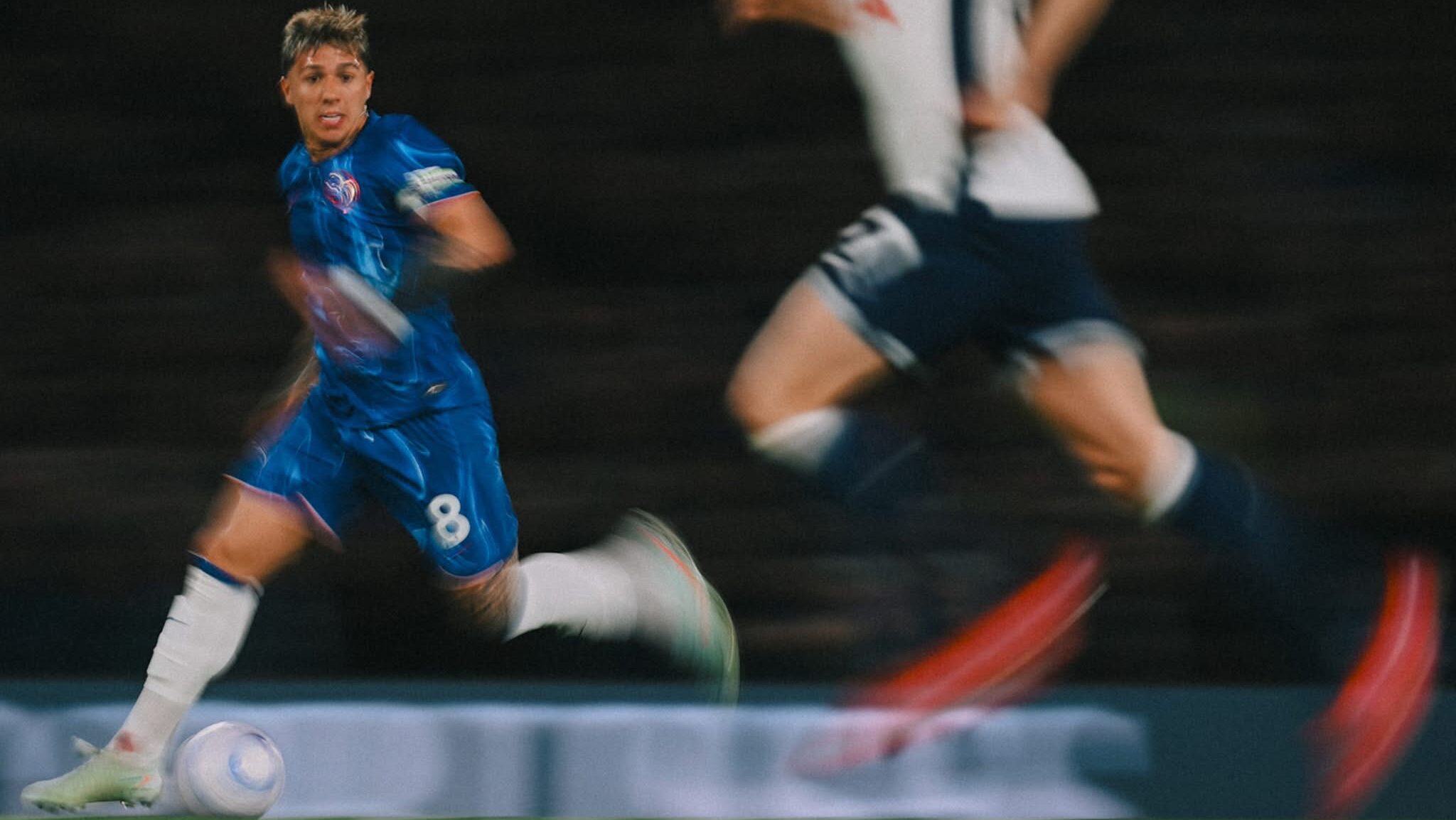
APFA
April 04, 2025
How Maresca’s ‘Ugly’ Chelsea Tactics Dominated Spurs
Well…yet another London derby that didn’t disappoint. Unlike last night, this is a fixture that normally throws up high scorelines, such as Chelsea’s 4-3 win back in December, but it is safe to say this game certainly didn’t lack the drama. On the pitch, the football did at times lack in that final bit of quality, but Chelsea asserted themselves from the start, and Enzo Fernandez’s second-half header was all it took to secure the Blue’s 3 points. From a tactical perspective, however, there was a lot to unpick with lots of rotations and various systems. Maresca said after the game “If we want to become an important team, we need to win in a dirty way, ugly way, and [I’m] quite happy”. This is exactly what Chelsea did, spending the last 10 minutes in a 5-4-1 low-block, but it proved Maresca knew he had to do whatever it took for the fans, for the team and for the table. So how did Maresca set his team up both in and out of possession to frustrate Postecoglou’s Tottenham?
The Lineups
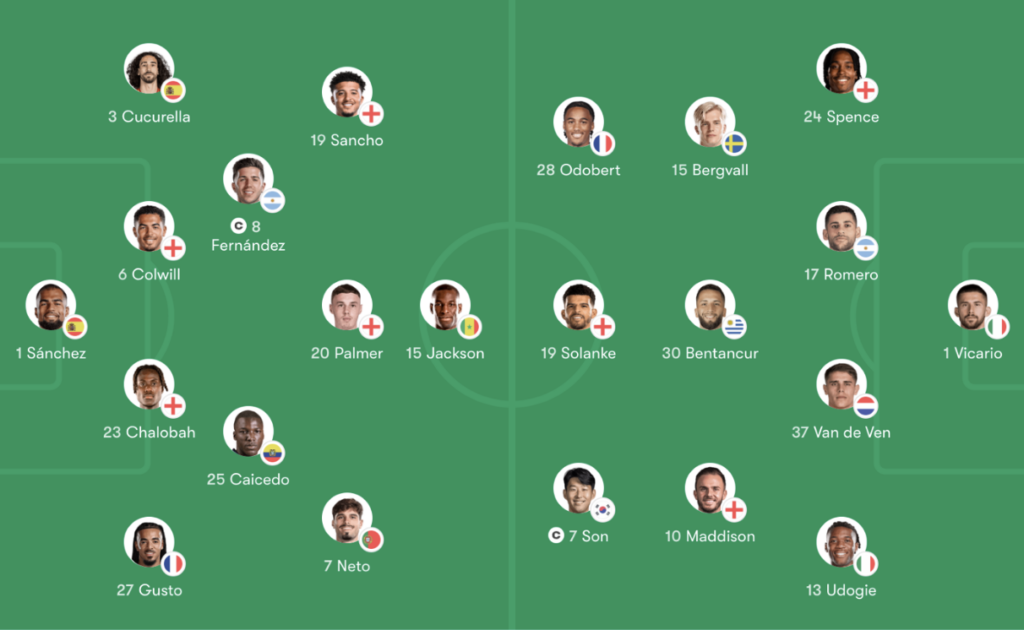
Chelsea in Possession
The first phase – playing out from the back.
In the first phase of the build-up, Chelsea would try and play out in a 2-4 shape, bypassing Tottenham’s 4-2-3-1 press.
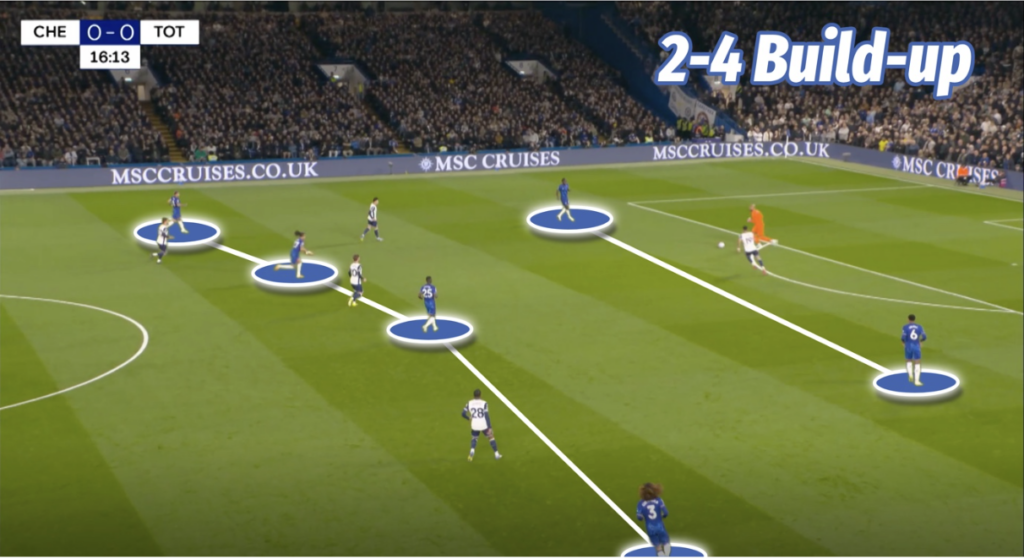
Initially, Colwill and Chalobah split, forcing Solanke to curve his run, using his cover-shadow to block off one of them. This opened up space in the middle for a ball from Sanchez into either Gusto or Caicedo.
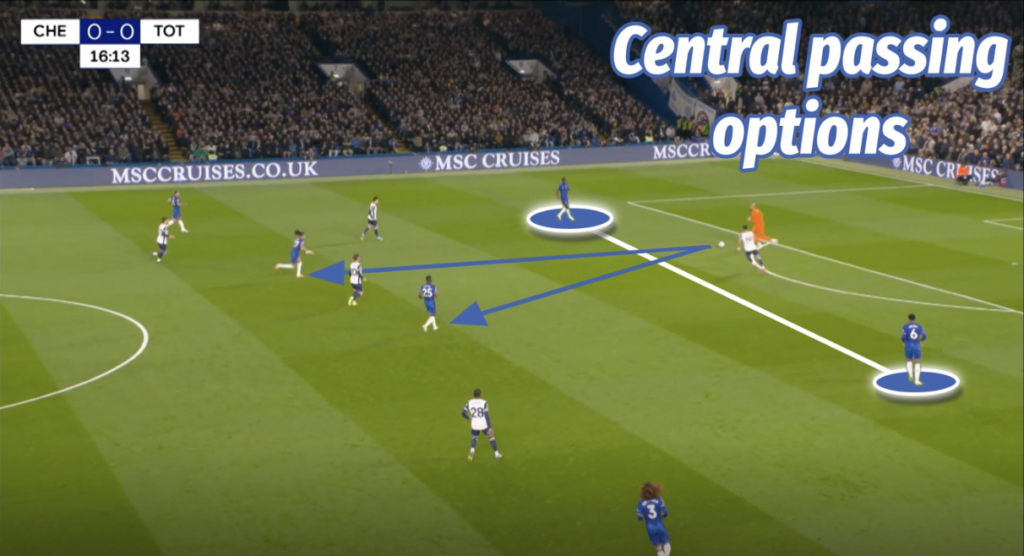
Son remained in a 50/50 position between Enzo (the situational right-back) and Chalobah. This gave Bentancur an ultimatum: man-mark Gusto in the central areas or hold off to cover the ball over the top into Enzo. He often opted for the latter, which meant Maddison would end up in a 2v1 scenario marking both Gusto and Caicedo.
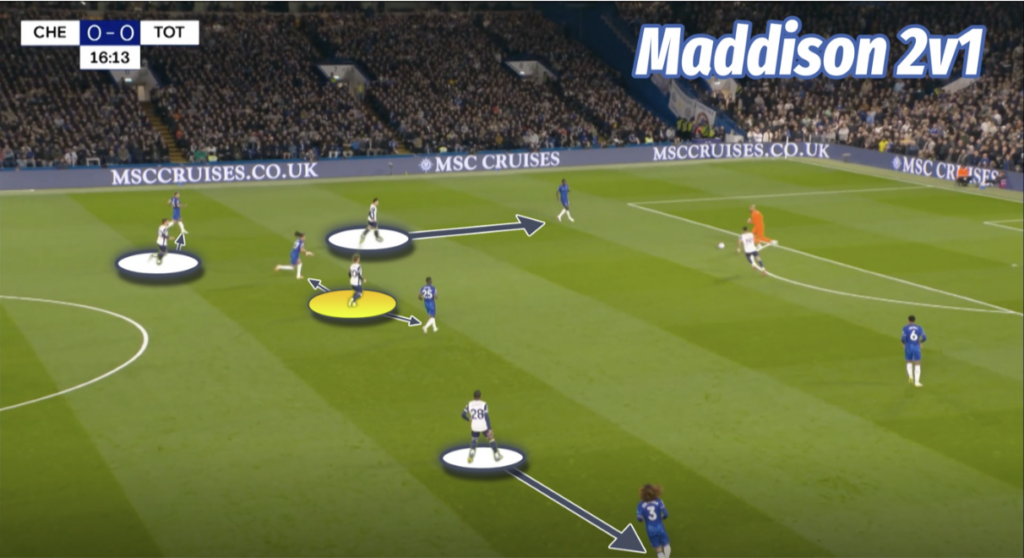
Either of the midfield duo could then look to turn with the ball, or swiftly shift it towards the underloaded opposite side of the pitch, where in this case Colwill is the spare man.
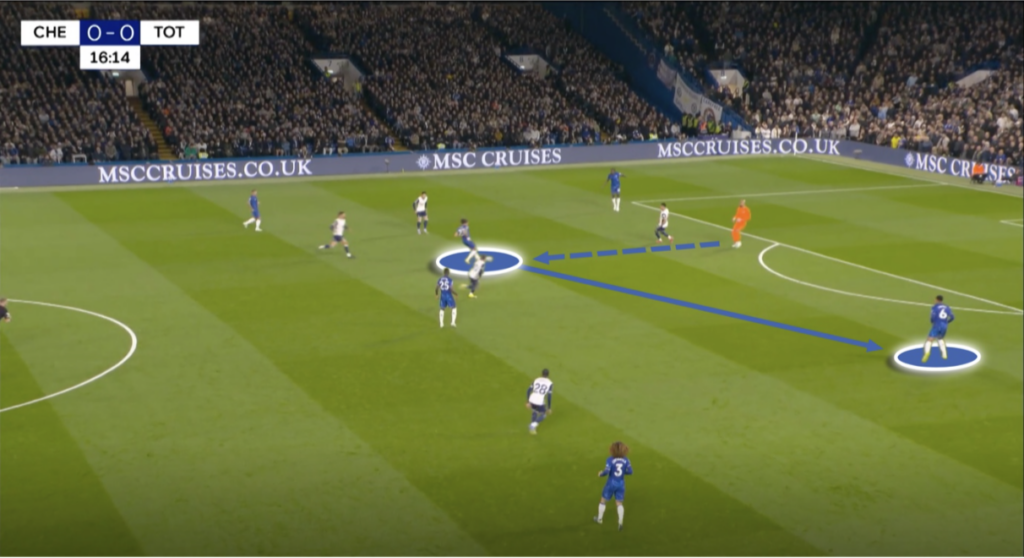
The Build-Up – Transitioning to Attack
In the transition, we saw a new(ish) role for Gusto and Cucurella, as they seemed to both take up more inside positions, close to Caicedo. We’ve seen them both invert into midfield before, but not usually at the same time to form a 3-man midfield.
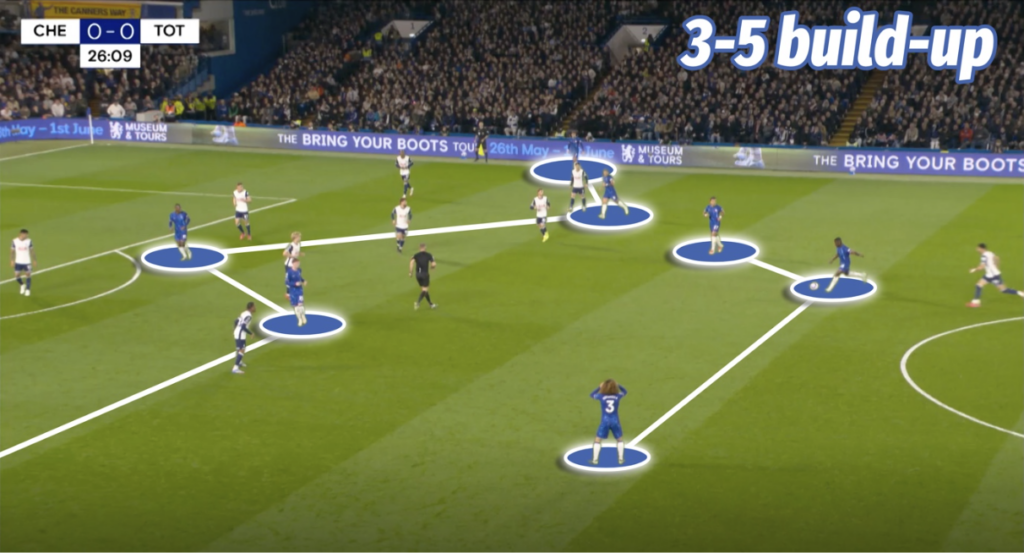
The first benefit in doing so is it creates a 2-3 rest defence shape, with Caicedo blocking off the central zones to protect both Colwill and Chalobah. But it also meant Cucurella and Gusto protected the channels in the half-spaces, nullifying the opportunities for Son and Odobert to carry the ball on the counter-attack. Instead, they were either forced to go 1v1, recycle the play inside, or try and take the ball
down the touchline where one of Chelsea’s centre backs could come across quickly to cover.
Secondly, it caused confusion among the Tottenham defensive shape, as Gusto and Enzo Fernandez would rotate to open up space. Unlike what we’ve seen recently, Enzo Fernandez played in the right channel, meaning Palmer shifted over into the left half-space instead, dragging the Spurs midfield duo over with him – meaning Son tucked inside to mark Enzo.
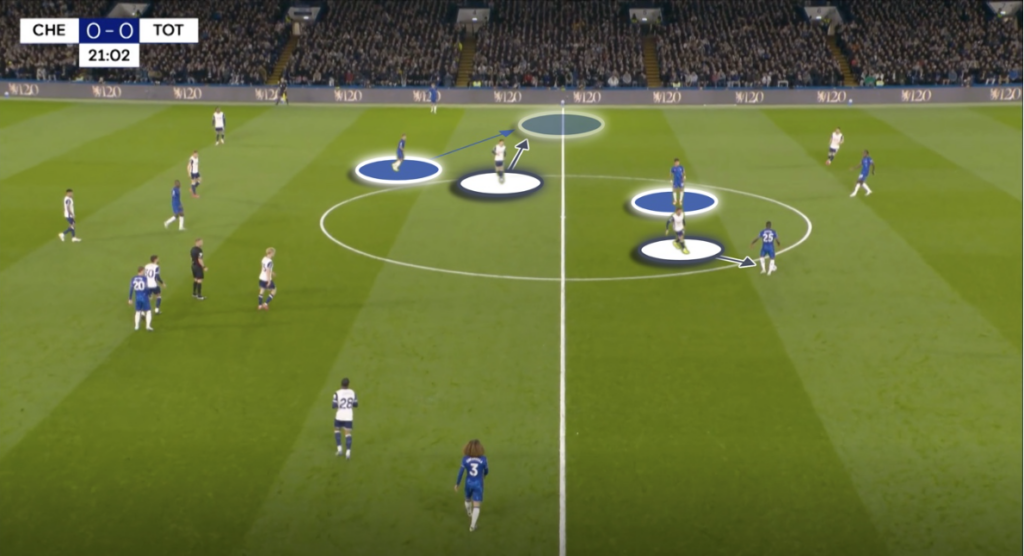
As Enzo dropped into a right-back position, he dragged Son wide, and with Maddison applying pressure to Caicedo, it allowed space in the middle of the pitch for Gusto to carry the ball into, and then remaining in that right channel in the final third to help with sustaining attacks.
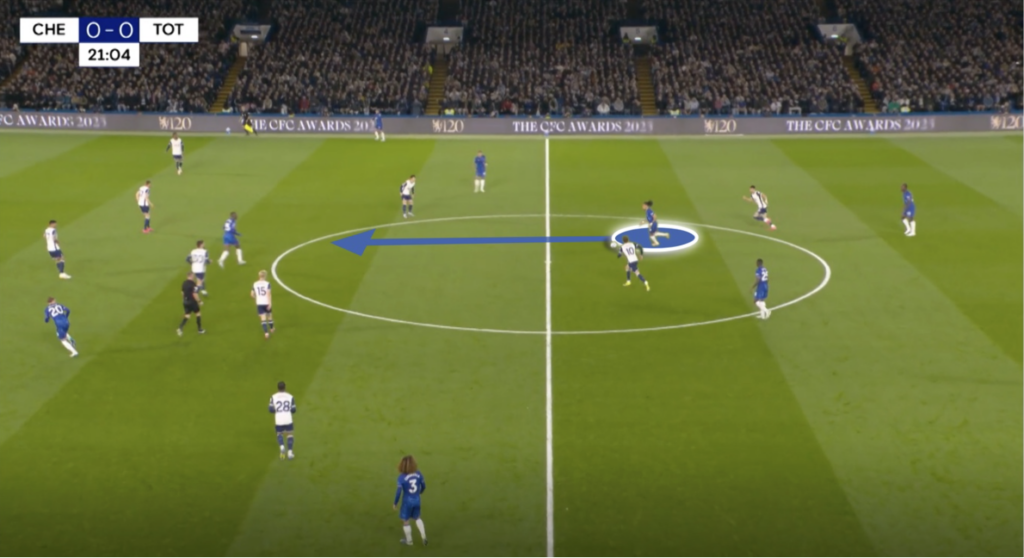
The Final Third – Sustaining the Attack
In and around the box, Chelsea stuck with their principles of an attacking line of 5. Sancho would hold the width on the left, as would Neto on the right, and Nicolas Jackson led the line as the striker. This meant Palmer in the left half-space and Enzo Fernandez in the right to complete the front 5.
Due to this, we saw the formation of a box between the two 10s, Gusto and Caicedo to outnumber Spurs’ 3 man midfield of Bergvall, Bentancur and Maddison, meaning Solanke had to drop deep to support.

Many will criticise having Palmer on the left, not the right, but it enabled good balance of creativity on both flanks, as both sides had a left (Neto, Palmer) and a right (Enzo, Sancho) footed player which enabled clever off-ball movements and 1-2 combinations before delivering into the box or taking a shot.
In the 19th minute, Enzo had a wonderful chance thanks to Palmer using that left foot to drive the ball across the face of the goal, after Bergvall failed to track the run.
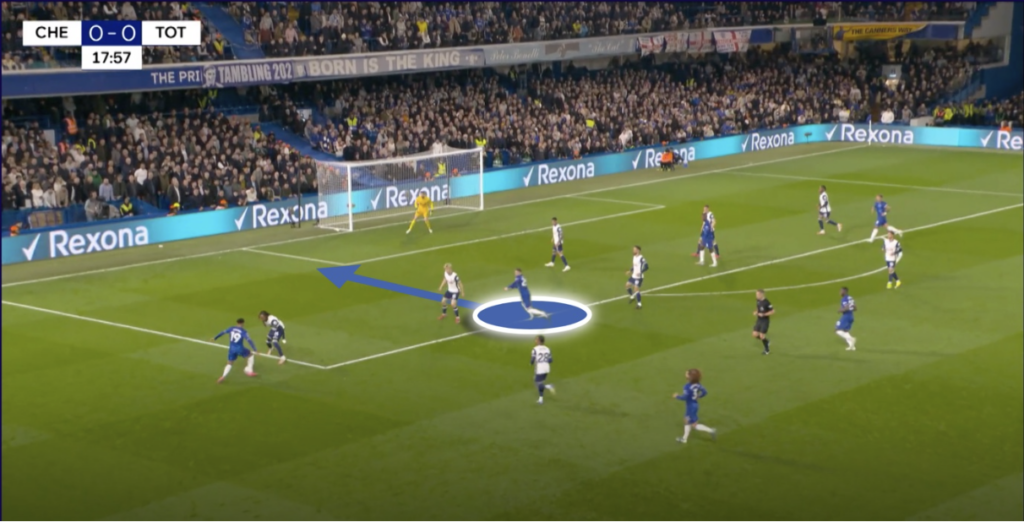
Enzo also makes a great run across Udogie, entering the box at the right time and attacking the space beyond Jackson, nearly fumbling the ball over the line.
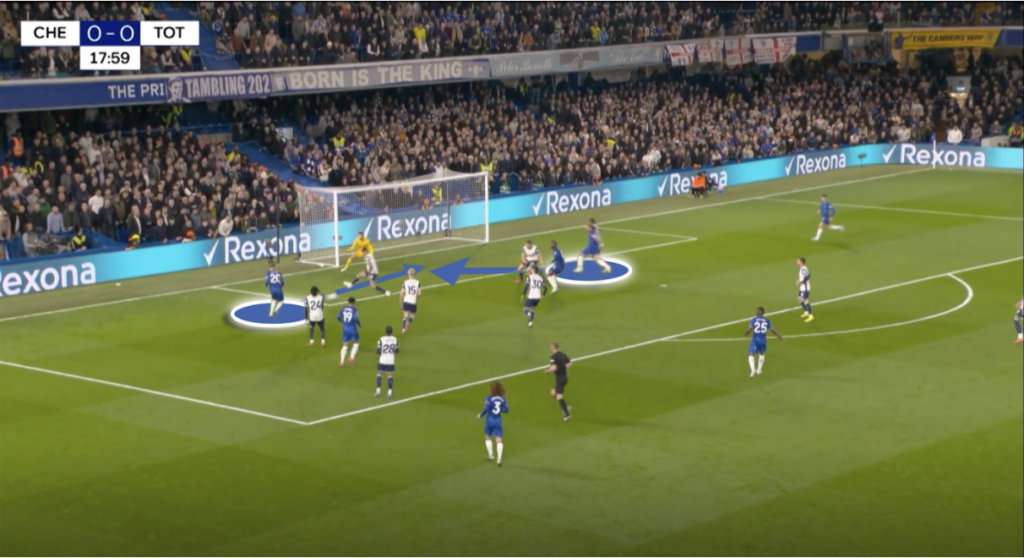
Similarly, deep far-post crosses were vital to this game. Towards the end of the first half, Neto plays a wonderful cross to Vicario’s back post, leading to a fantastic chance (and a wonderful save) from Sancho. But it was the same principle that led to the game’s only goal…well, only legal goal anyway.
Palmer swaps places with Sancho, holding the width on the left-hand side whilst Sancho takes on his man. The ball recycles back to Palmer who uses that left foot to a fire a cross into the box, where Chelsea have a 3v3 against Spurs backline.
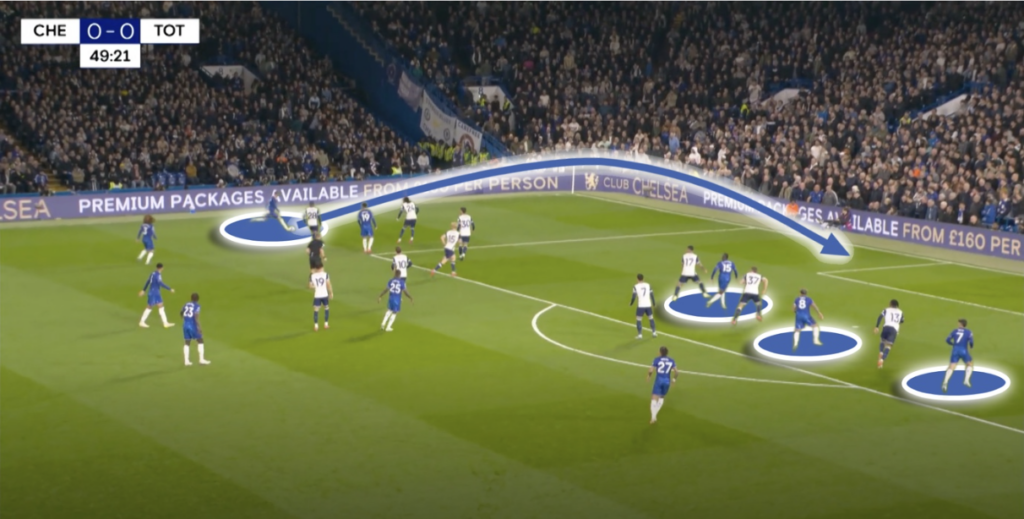
Both Van De Ven and Romero react early, blocking Jackson from winning the header, which leaves Udogie 2v1 down against Enzo and Neto. Udogie’s hesitation to commit means Enzo is free in the middle of the box, who fires that header into the back of the net.
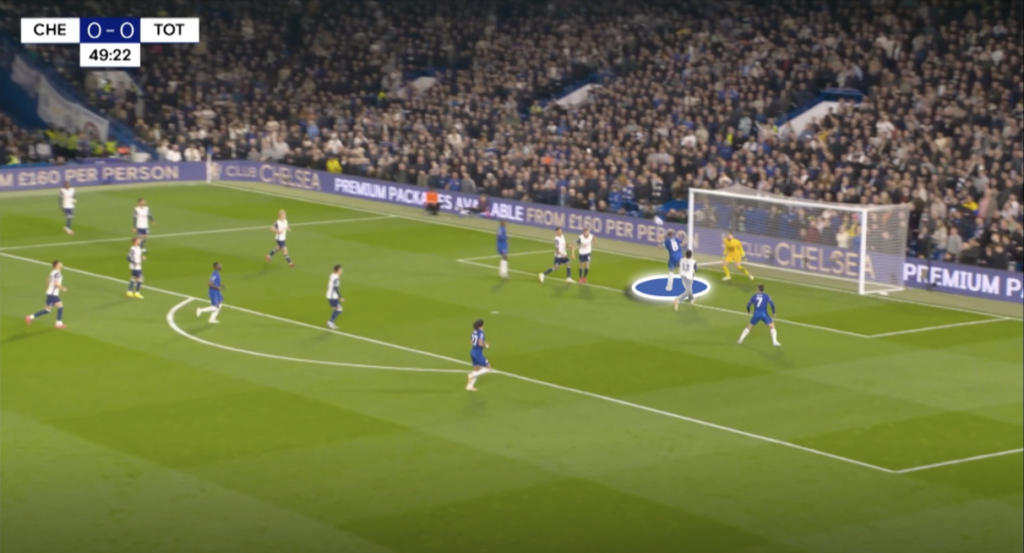
Spurs in Possession vs Chelsea’s Defence
When Spurs had goal kicks, Chelsea opted for a man-to-man approach, except for Udogie. As Romero and Van De Ven split, Jackson would curve his run to apply pressure to Vicario, whilst blocking off the pass into Romero. Neto stayed in the 50/50 position between Udogie and Van De Ven. However, Gusto was more concerned with the threat of Son on the transition, and therefore tended not to push high in the initial press. Palmer would cover off Bentancur, and Caicedo would block passes into Bergvall. This left Udogie as the only viable outlet for Spurs, unless they chose to play over the press into Solanke.

Many of you might have noticed that Sancho is absent from that image. This is because he would man-mark Spence regardless of his positioning. From goal kicks, Spence was inverting into the midfield into the space where Bergvall once was, meaning Sancho tracked him into this inside position, forming a midfield 2 alongside Enzo Fernandez, who tracked and covered Maddison.
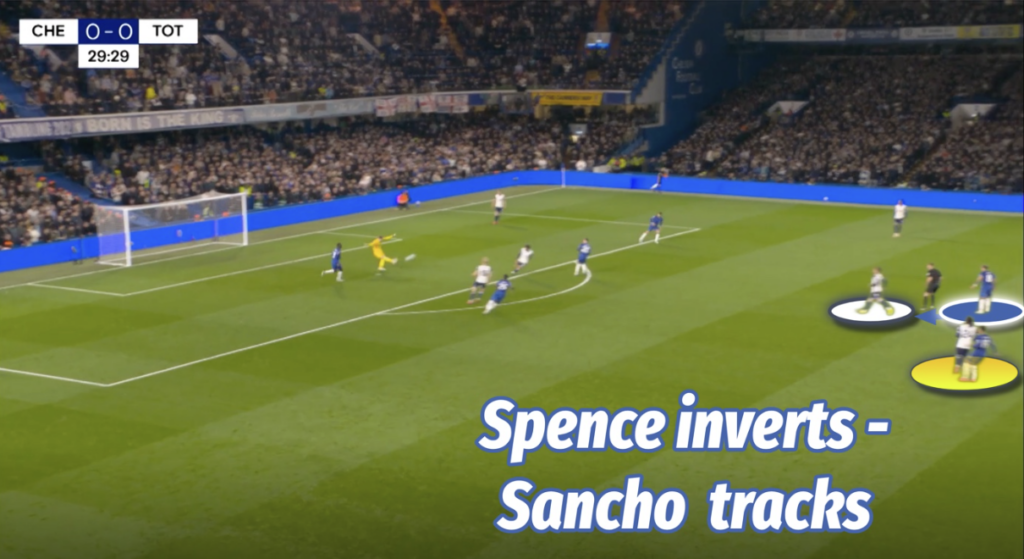
Throughout the game, however, Maresca set his team up in a 4-2-3-1 out of possession system. This allowed Chelsea to go man for man, whilst maintaining a +1 advantage at the back to mark Solanke and keeping maximum pressure. Jackson would press both CBs, whilst Palmer would pick up Bentancur who often stayed deeper during Tottenham’s build-up. This prevented Spurs playing out centrally. Both Sancho and Neto could then track the runs of the full-backs, whilst the double pivot of Enzo and Caicedo could man-mark Bergvall and Maddison. Gusto and Cucurella marked their respective winger, meaning Chalobah and Colwill could double up against Solanke.
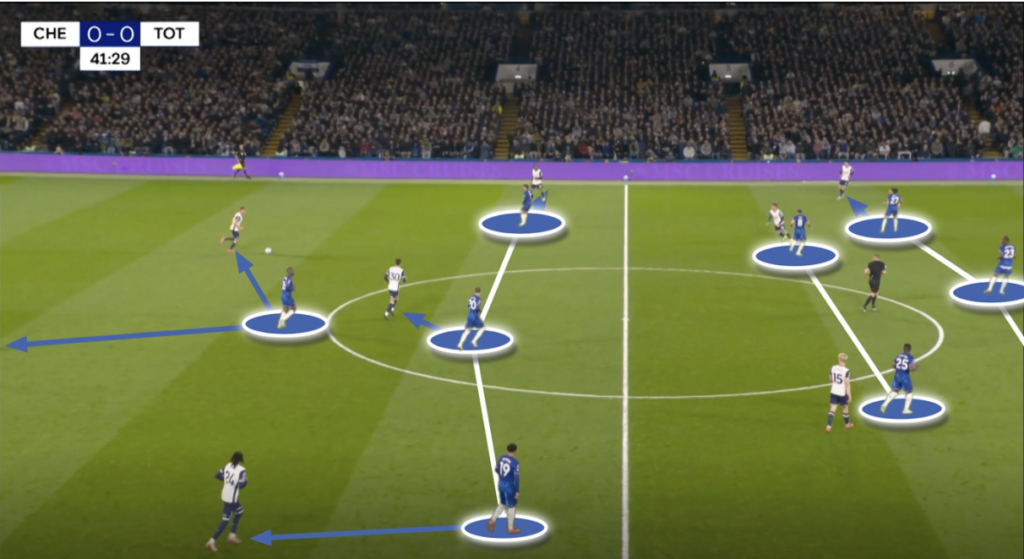
In the final 10 minutes, we saw the true determination of the squad to see the game out, defending in a deep 5-4-1. After substitutions, Tosin, Chalobah and Colwill made up a back 3 to defend the box. Cucurella and James became wing-backs, whilst Gusto moved to left wing and Madueke on the right, with Dewsbury-Hall and Caicedo in the middle, leaving Neto up front.
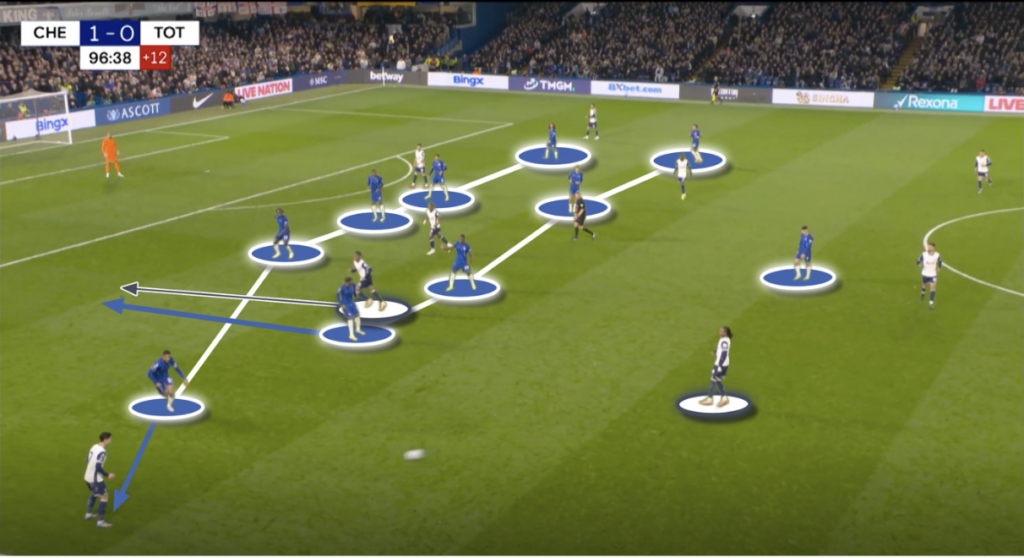
This setup certainly wasn’t an attractive way to see the game out, but it worked. With Udogie and Porro pushing high, and Tel, Son, Solanke and Johnson all causing chaos in attack, Madueke and Gusto could drop deep to support their wingbacks, keeping 7 players back against Spurs’ attacking 6, with Caicedo and Dewsbury-Hall just ahead to force Spurs into these wide traps. It did mean Neto was isolated upfront, often covering the passing lane into Bentancur instead of applying pressure.
In this scenario, Chelsea were happy to let Spence or Romero (the now Centre-back pairing) have the ball as they posed very little threat, and instead ensured they blocked off all progressive routes into the wings or midfield. All in all, it was a strong performance from the Blues. They were most people’s favourites going into this game, and whilst it certainly was not pretty, they looked the most threatening team from start to finish and ultimately, despite Ange’s disagreement, deserved the 3 points.
Every game is a cup final for Chelsea now if they want to really push for a top 4 finish this season but with a nearly fully strength squad and this level of determination, they should not be counted out just yet.
Written by APFA Member, Cameron Schultz
Want to Break Down a Game as Expertly as Cameron Does in This Article?
Our online courses offer unmatched guidance across key areas of football analysis, helping you sharpen your skills and earn a certification to advance your development as an analyst.
